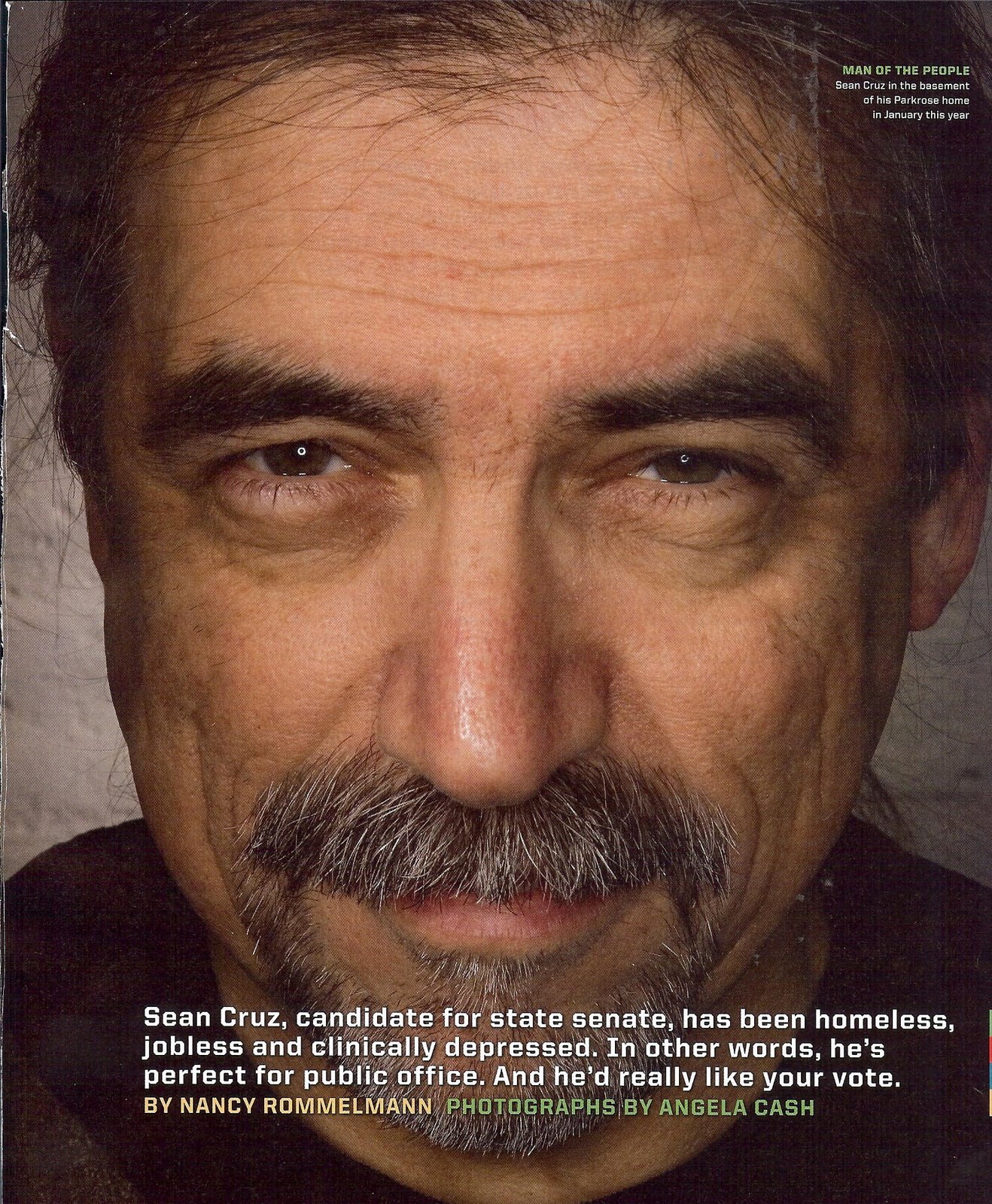I can eat fire
by Sean Cruz
Portland, Oregon --Professor Tom Holm’s essay, “Patriots and Pawns: State Use of American Indians in the Military and the Process of Nativization in the United States”, goes far to explain why American Indians have enlisted and served in numbers that far exceed their percentage of the US population, despite the racist and hostile experiences that characterize the history of Native American peoples and the US military.
Native Americans volunteer for military service for the same array of reasons that non-Natives enlist, such as: family tradition, financial reasons, a desire to get away from home, to learn new skills, as a test of courage or to join battle with a specific enemy; i.e. Osama Bin Laden or Adolf Hitler. Professor Holm identifies several other factors specific to Native Americans to explain the phenomenon.
He also writes about the attitudes that shape military perceptions of Native Americans and that influence the roles that Indians are often called to serve in military operations, in how they are used.
Some Indian nations and Native American individuals have seen military service as a treaty obligation, a matter of honor; even though the US has rarely honored its own treaty commitments, their sense of honor requires their service.
Institutional factors, such as active recruitment efforts by the BIA and in Indian boarding schools, and discriminatory practices by local draft boards contribute to the enlistment numbers.
Holm briefly examines the relationships of ethnicity, political elites and the military. Throughout history, ethnicity has always been a vital part of the equation:
“In general, militaries not only protect the nation from foreign invasion, but promote the causes of and provide security for the hierarchical apparatuses of the state. In plural societies or imperial systems, state elites, both in uniform and out, have to judge which national or ethnic groups can serve in the military without turning the guns around and posing a threat to the state.”
Throughout history, ruling elites and nations have adopted many different strategies to incorporate vanquished peoples into their militaries, shaped by the dominant culture’s view of the subjugated ethnic groups, and by their perception of the potential threat. Holm suggests that an important reason that the US military has not felt threatened by its Native American service members is because the population is so few in number, such a small percentage of the total force.
Holm observes that incorporating Native Americans into the military is a method of assimilating them into the melting pot, of maintaining colonization.
From pre-Colonial times, Euro-American views of Indians as possessors of mythic stealth and courage, qualities that were promoted in popular fiction, Holm writes, “…whites were infected with the ‘Indian scout syndrome.”
He cites as example Colonel James Smith’s 1799 description of a battle where a Delaware chief and some warriors, surrounded and trapped in a cabin, chose death rather than surrender. When Smith threatened to burn the cabin down, the chief replied defiantly that he could “eat fire.” When the fire was set, the Indians came out fighting and were all killed.
“Whites apparently believed,” Holm writes, “that these mystical traits, to the extent that they existed at all, were genetically inherited rather than learned.”
Holm provides several examples of Indian scout syndrome operating in WWI, WWII, Korea and Viet Nam, at the highest national and military policy levels as well as at the unit level, stereotypes determining that the Indian soldiers are naturally best suited for certain types of combat roles, those that are likely to get them killed.
Euro-American forms and purposes of warfare were and are drastically different from those of Native Americans (and of many other indigenous societies throughout the world).
While people were certainly killed in wars fought between tribes, killing the enemy was generally not the goal. Death often brought open hostilities to an end.
The British introduced the practice of scalping and Native Americans responded in kind.
The European nations had created armies and navies who fought to annihilate their enemies, however, and introduced that form of warfare to the American continent.
As the British and French forces fought for control of the continent, tribes were forced to choose sides and inflict harm on each other in ways that they had not done before. Body counts replaced counting coup.
“Placed in the position of fighting for survival for the first time, increasingly equipped with the lethal technology of their ‘allies,’ and faced with a serious erosion of their territories because of expanding European ‘settlement,’ Indians began to kill both the European interlopers and each other in ever increasing numbers,” Holm writes.
Holm observes that the wars thus fought have taken terrible psychic tolls on its Native American veterans:
“…it would be well to emphasize the significance of ceremonies to the maintenance of Indian identity and the individual’s sense of peoplehood. Indigenous nations are holistic societies. That is to say religion, land, language, ceremony, and kinship structures are all part of an organic whole on which rests the continued well-being of the particular society.”
The psychic injuries continued, as veterans returned to Indian Country to find that their collective service to the nation is unrewarded by improved conditions for their People, writ large with the termination and relocation policies of the mid 20th century.
The American Indian Movement (AIM) arose in the course of the Viet Nam era, led by a number of combat veterans, intensely politicized by their experiences in Viet Nam and the “cognitive dissonance” they encountered between the national rhetoric and the realities of colonial life on the reservation.
Lastly, Holm calls for a new model: “Sustainable and truly Indian alternatives to US military services must be found. Otherwise, the next century will find us continuing in the mode developed for us during this one, not as free and self-determining peoples, but as patriots and pawns of the North American colonial order.”
Clearly, the answer lies in improving living and working conditions across Indian Country to more closely match those found off the reservation, and in implementing strategies to end the colonial relationships in this Land of Broken Treaties.
In this vitally important sense, nation-building should begin at home.
----------------------
All quotations in this essay: Tom Holm, Patriots and Pawns: State Use of American Indians in the Military and the Process of Nativization in the United States, Chapter XII of "The State of Native America: Genocide, Colonization and Resistance", South End Press, M. Annette Jaimes, editor, a collection of essays, 1999
Subscribe to:
Post Comments (Atom)






No comments:
Post a Comment